Persistent Ankle Instability After Ankle Injury
Persistent Ankle Instability After Ankle Injury
written by Dr SW KONG
(Last updatd on: 15th Oct 2020)
Summary
Ankle instability is a common problem following ankle sprain. Ankle sprains are common, and, because many are minor, both patients and medical professionals may overlook the seriousness of severe ankle ligament injuries, dismissing them as ‘just a sprain’. Often the instability is not very obvious on examination, and X-rays are usually normal. Careful examination, together with specially positioned and stress X-rays and MRI, are needed to reveal the full problem. Modern minimally invasive techniques of ligament repair or reconstruction, treatment of cartilage injuries and removal of impinging bone and soft tissue provide excellent results. Neglected ankle instability is the commonest cause of ankle arthritis, requiring ankle fusion or ankle replacement.
Ankle injuries are one of the most common sports injury, with various medical studies, showing an incidence of 11.2-20.8% (3) in different sports.
Ankle injuries can be simplified divided into soft tissue (ligamentous / joint capsule) injuries; bone injuries (fracture / contusion); or combined types.
Soft tissue ankle injury (ankle sprain) is far more common than bony injury (81.3% vs. 10.4%).(4) In USA (2) there are an estimated 660,000 ankle sprains (2.15 per 1,000 person-year) every year; and in UK (6) there is an estimated 302,000 new ankle sprains each year, and, of those, 42,000 are severe sprains.
There are two common sources of chronic pain and disability after ankle injury; they are persistent ankle instability and ankle impingement.
Fortunately most of the ankle sprains are healed without persistent pain or chronic disability (1,5) after conservative management (such as RICE therapy, physiotherapy etc.) However there are 20-40% ankle sprains that will develop into chronic instability with re-injury rate as high as 80%. Those chronic ankle instability patients may need ligament repair, augmentation or reconstruction.
Persistent ankle instability
One common cause of chronic ankle pain after injury is ankle instability. Chronic ankle instability refers to repetitive/recurrent episodes of ankle sprains (7) resulting in the ankle instability.
• History
– Typical history of inversion ankle injury
– Inability to run and turn suddenly
People usually have the following symptoms:
• Pain
– More at lateral side (outside ankle)
– May radiate medial malleolus (inside ankle)
• Stiffness
• Swelling
• Exacerbate by activity
– Worse by climbing stairs or prolonged standing or walking
• Giving way
Fig. 1 Green arrow indicated there is loose body, ankle 12.67 tilting of the ankle due to chronic instability. |
Physical examination
• Anterior drawer test showes ligament laxity (test anterior talofibular ligament)
• Talar tilt test show ligament laxity (test calcaneofibular ligament)
• Tender anterior joint line
• Peroneal tendinitis with swelling and tenderness around the lateral malleolus and weakness and pain in resisted ankle inversion
Investigations
• X-ray (9): special ligament stress views (we use a ‘Telos’ device) can demonstrate instability which is not obvious on normal X-rays
• MRI (9) can assess the ligaments and the other associated pathology
Fig. 1(a & b) X-ray show unstable ankle when stress view applied | |
|
|
| Fig 2 (a&b) Lateral view showing unstable ankle when stress applied | |
|
|
Fig 3 (a & b) MRI showed rupture ATFL clearly | |
|  Fig. 3b Rupture ATFL in ankle instability patient Fig. 3b Rupture ATFL in ankle instability patient |
When the ankles is very unstable and fail conservative management, surgery is indicated. Arthroscopic ligament repair / reconstruction is the preferred choice to restore the ankle stability (10-15).
The advantages of arthroscopic surgery to open surgery are 1) less post-surgery complication, 2) faster recovery.
Study (8) also showed there are several intra-articular conditions associated with chronic ankle instability, which if left untreated, will affect the surgical outcome of the ligament repair / reconstruction.
| Synovitis/ soft tissue impingement | 86.2% |
| Chondral/ osteochondral lesion | 37.9% |
| Anterior distal tibial osteophyte | 26.4% |
| Loose body | 8% |
| Distal tibiofibular ligament injury | 6.9% |
Ankle Impingement
Please refer to Ankle Impingement Article.
References
1. Bassett FH, Gates HS, Billys JB, et al; Talar impingement by the anteroinferior tibiofibular ligament. A cause of chronic pain in the ankle after inversion sprain. J Bone Joint Surg Am 1990;72:55
2. Captain Brian R. Waterman, MD, Major Brett D. Owens, MD; The Epidemiology of Ankle Sprains in the United States. J Bone Joint Surg Am. 2010;92:2279-84
3. Daniel Tik-Pui Fong, Patrick Shu-Hang Yung and Kai-Ming Chan etal; A Systematic Review on Ankle Injury and Ankle Sprain in Sports. Sports Med 2007; 37 (1): 73-94
4. Daniel Tik-Pui Fong, Patrick Shu-Hang Yung, Kai-Ming Chan etal; Sport-related ankle injuries attending an accident and emergency department Injury, Int. J. Care Injured (2008) 39, 1222-1227
5. Ogilvie-Harris DJ, Gilbart MK, Chorney K. Chronic pain following ankle sprains in athletes: the role of arthroscopic surgery. Arthroscopy 1997;13: 564–74.
6. Ferran NA, Maffulli N; Epidemiology of sprains of the lateral ankle ligament complex. Foot Ankle Clin. 2006;11:659-662.
7. Nicholas A. Ferran, MBBS, MRCSEd* Francesco Oliva, MD, PhD,f and Nicola Mqffulli, PhD, FRCS; Review Article: Ankle Instability Sports Med Arthrosc Rev Volume 17, Number 2, June 2009
8.Yinghui Hua, M.D., Shiyi Chen, M.D., Ph.D. etal; “Combination of Modified Broström Procedure With Ankle Arthroscopy for Chronic Ankle Instability Accompanied by Intra-articular Symptoms” The Journal of Arthroscopic and Related Surgery, Vol 26, No 4 (April), 2010: pp 524-528
9. Kyoung Min Lee & Chin Youb Chung & Soon-Sun Kwon etal; “Relationship between stress ankle radiographs and injured ligaments on MRI” Skeletal Radiol (2013) 42:1537–1542
10. Kentaro Matsui, Bernard Burgesson, Masato Takao, James Stone, Stéphane Guillo, Mark Glazebrook, ESSKA AFAS “Ankle Instability Group; Minimally invasive surgical treatment for chronic ankle instability: a systematic review” Knee Surg Sports Traumatol Arthrosc, published online 11-2-2016
11. S. Guillo, M. Takao, J. Calder, Jon Karlson, Frederick Michels, Thomas Bauer, Ankle Instability Group; “Arthroscopic anatomicalreconstruction of the lateral ankle ligaments” Knee Surg Sports Traumatol Arthrosc, published online 25-9-2015
12. Masato Takao, Kentaro Matsui, James W. Stone, Mark A. Glazebrook, John G. Kennedy, Stephane Guillo, James D. Calder, Jon Karlsson, Ankle Instability Group; “Arthroscopic anterior talofibular ligament repair for lateral instability of the ankle” Knee Surg Sports Traumatol Arthrosc published online 16-5-2015
13. Frederick Michels, Stéphane Guillo, Frederik Vanrietvelde, Eddy Brugman, Ankle Instability Group, Filip Stockmans; “How to drill the talar tunnel in ATFL reconstruction?” Knee Surg Sports Traumatol Arthrosc, published online 8-2-2016
| Copyright ©2016 Asia Medical Specialists Limited. All rights reserved. |
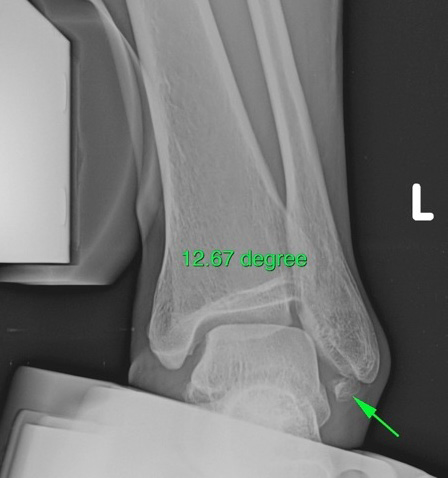
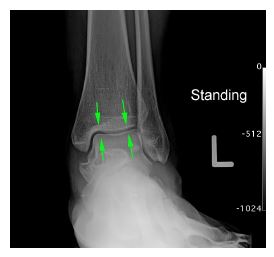 Fig. 1a X-ray without stress applied
Fig. 1a X-ray without stress applied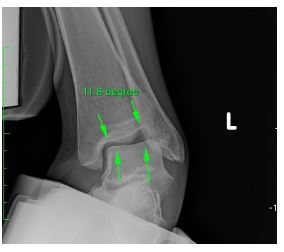 Fig. 1b Opening of ankle joint when stress applied
Fig. 1b Opening of ankle joint when stress applied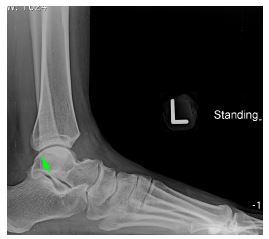 Fig. 2a lateral xray without stress
Fig. 2a lateral xray without stress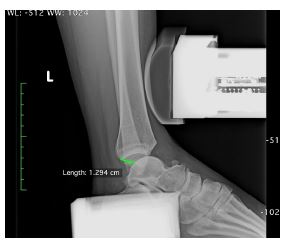 Fig. 2b 1.294 cm anterior displacement seen
Fig. 2b 1.294 cm anterior displacement seen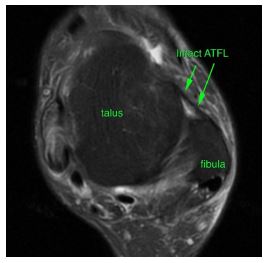 Fig. 3a Intact ATFL in normal person
Fig. 3a Intact ATFL in normal person